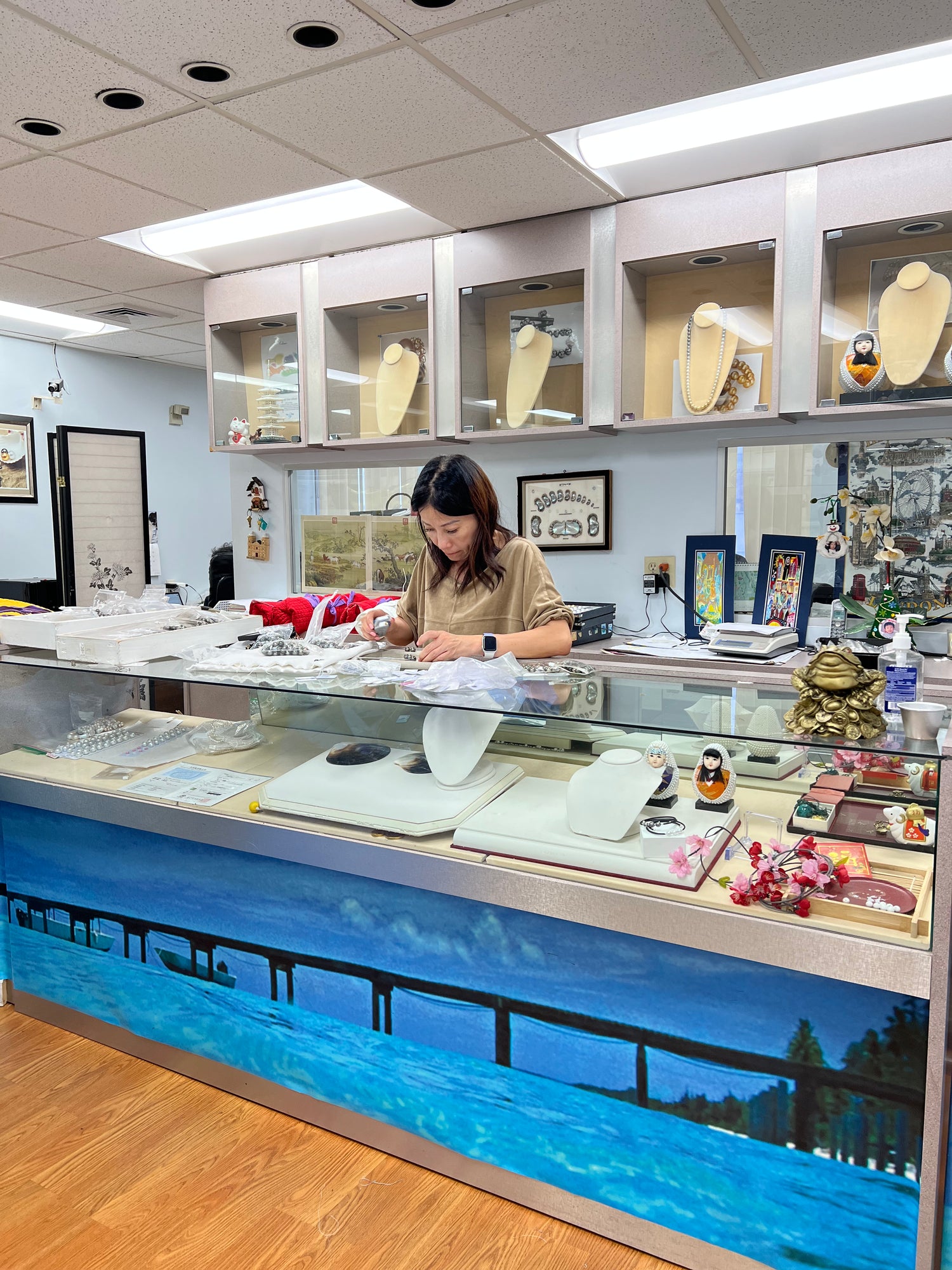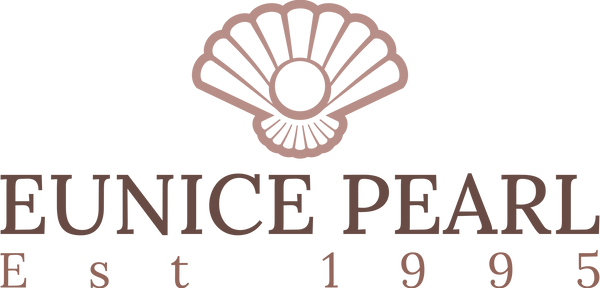Your Pearl Guide
Real vs Fake?
-
How are pearls formed?
Pearls are formed when a mollusk (oyster, clam, mussel) has an irritant enter its shell. In defense, the mollusk produces layers of fluid known as nacre. This process takes between 5-10 years, which results in the beautiful luminous beads we know as pearls.
-
Cultured Pearls
Today, mostly all pearls sold are Cultured Pearls unless stated as natural pearls. Cultured pearls make up the majority of pearls on the market today. The pearls are formed in the same way as natural pearls, but instead, the irritant is surgically placed into the mollusk. This process is protected by pearl farms can take up to five-to-ten year farming cycle, and only 5% are of the high quality required for fine jewelry.
-
How to spot fake pearls
Fake pearls appear perfectly round and have a very smooth surface, while real pearls will present slightly off-round shapes and a grittier surface. One way to test a fake pearl is to rub it against another pearl; fake pearls glide across each other but cultured pearls feel gritty because of the layers of nacre.
One of the most important aspects to consider is lustre. A real pearl will have an incredibly lustrous and smooth surface that reflects light. Hold the necklace in natural light to check for lustre and observe it from various angles. It should appear to have a mirror-like reflection. If the pearls are dull or cloudy, likely, they are not genuine.
How To Choose a Pearl
-
Luster
When light enters a pearl, it reflects back layers of nacre to produce the rich glow we call luster This is the inner glow that seems to emanate from the center of a high-quality pearl. Any pearl that looks too chalky or dull indicates low quality.
-
Surface
A pearl is natural, so there will always be some form of imperfection. A cultured pearl with a clean surface will have a higher value than a spotted, bumpy or cracked one. These slight blemishes reflect the natural beauty of the growth process.
-
Shape
Since cultured pearls are grown by oysters and subject to the whims of Mother Nature, it is very rare to find a perfectly round cultured pearl; those that are considered round tend to be more valuable. Baroque pearls, those that have an irregular shape, have risen in popularity due to its unique irregular shape.
-
Size
Pearls are measured in millimeters, typically ranging from 5 to 16mm. Generally, the larger the pearl, the more valuable it will be.
-

SHOWROOM ADDRESS:
The California Jewelry Mart
607 S Hill St #822, Los Angeles, CA 90014
OPENING HOURS:
Monday to Friday
10am to 5:00pm
TEL: (213) 627-0282
